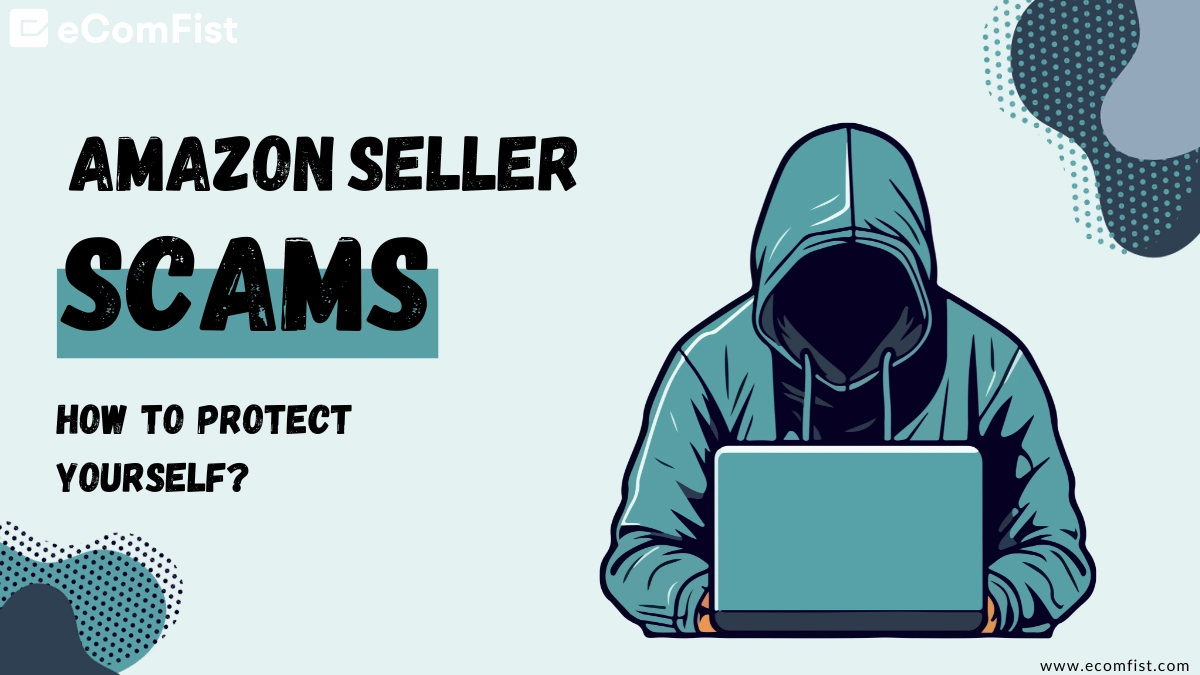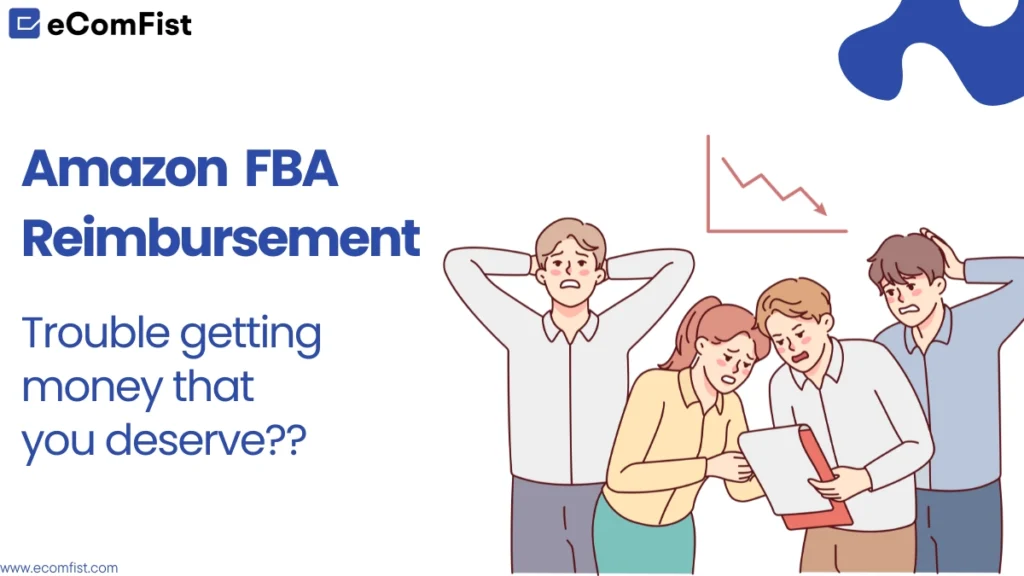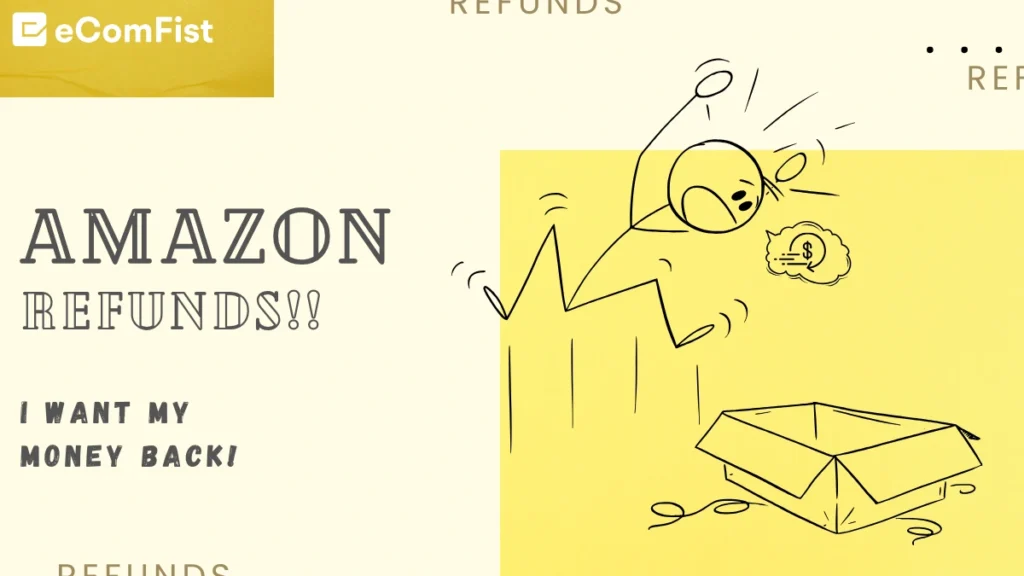Here in Amazon’s wild and crazy world, frauds are not something that happened in the past; they’re happening right now! A more complex Amazon seller scam emerge as the seller community expands and the entrance gate opens. Are you aware that a shocking one hundred fake accounts are created on the Amazon daily? This is according to a recent study.
So, do you want to learn the Amazon scams and keep your journey in the market safe?
Read More
Why do sellers quit Amazon FBA?
Why do 95% of Amazon FBA sellers fail?
Stay Sharp: 5 Amazon Seller Scams You Should Be Wary Of
As an Amazon seller, constant vigilance is key to avoiding potential scams that could jeopardize your account. Let’s delve into some typical Amazon seller scams you need to be cautious about.
1-Account hijacking scam on Amazon
One typical kind of scam involves counterfeiters gaining control of an Amazon seller’s account and then using it for their personal benefit. Scammers can steal key company information, alter your product listings, or even obtain access to your bank account after they get into your account.
You should always use strong passwords, update them frequently, and never share your login information with anyone to protect yourself against account hijacking fraud. The good thing is that two-factor authentication is now mandatory for Amazon.
Be sure to keep an eye on your account settings, product details, listings, and any suspicious activity. Use software like Jungle Scouts, Helium 10, or Bindwise. When something out of the ordinary occurs with your seller account or postings, you may get an alert from these sofwares.
2-Phishing Scams on Amazon
In phishing scams on Amazon, the scammer pretends to be a legitimate business in an effort to trick customers into giving over personal information, financial data, or login credentials. Learn all about these con artists and how to avoid falling victim to them:
Methods Used by Amazon Phishing Scams
1-Scam Emails and Texts
Scammers frequently use email addresses and communications that seem like they came from Amazon. These alerts may suggest that there are problems with your account and encourage you to visit the links that are provided.
2-False Online Presence
For the purpose of stealing Amazon login credentials, phishers build phony websites that seem quite similar to the real Amazon site.
3-Spoofing Amazon Customer Service
Callers impersonating Amazon support agents may try to trick you into divulging personal information by claiming that your account is experiencing problems.
How to protect yourself from Phishing scams
- Make sure you always verify the email address. All official communications from Amazon must end with “@amazon.com.”
- A sense of urgency is frequently created by phishing emails. If you get a message urging you to do something urgently or provide personal information, be alert.
- You may see the full URL when you hover over an email link. Stay away from it if it doesn’t look like an Amazon page or takes you somewhere else.
- To reach the official Amazon website, do not use links but instead put “www.amazon.com” into your browser.
- Verify that the website’s URL starts with “https://” and keep an eye out for the padlock icon in the address bar; it signifies a secure connection.
3-Listing hijacking scams on Amazon
The dishonest practice of “listing hijacking” occurs when unapproved sellers take over an official Amazon product listing. This fraudulent activity puts both sellers and buyers in serious danger. A buyer may believe they are purchasing from you when, in fact, they are purchasing a knockoff version of your products because this takes place right under your listing.
To trick customers into buying from them instead of you, the real seller, these shady merchants will “list a product” under your ASIN. They take orders but never deliver the goods; all they do is provide a false tracking number.
In addition to tarnishing your company’s reputation, these frauds might cause problems with your account, such as low ratings and hefty returns.
How does listing hijacking occur?
1-Counterfeit Sellers
Scammers acquire unauthorized access to product listings by taking advantage of security flaws in seller accounts or inadequate safeguards.
2-Manipulation of Product Details
In order to promote their own items and trick customers, product hijackers frequently alter product information like photos, titles, or descriptions.
3-Countering Competitors
Other sellers use hacking as a strategy to harm a competitor’s reputation. They do this by offering subpar or fake products with a legal listing.
Preventing the Misuse of Your Listings
- It is important to keep an eye on your product listings to make sure nobody has made any unauthorized changes, particularly to the images, titles, or pricing.
- To register your brand with Amazon and secure it, enroll in the Amazon Brand Registry. Unauthorized sellers cannot edit your listings with the help of this program.
- Notify Amazon right away if you come across fake sellers engaging in listing hijacking. Invoices and trademark information are suitable forms of proof of ownership.
- Add watermarks to your product images with your brand name or logo.Hijackers will have a more difficult time using your images in their own listings because of this.
- To make it harder for hijackers to sell fake items, join the Amazon Transparency program. They provide you with unique codes to validate your products.
- If you take precautions and keep an eye on your listings, you can lessen the likelihood that you’ll be a victim of Amazon listing hijacking scams.
4-Amazon account suspension scams
In an Amazon suspension scam, the scammers falsely notify naïve sellers that their accounts are suspended or at risk of suspension. Scammers play on sellers’ worries to get them to do things that could put their accounts at risk.
After that, they’ll promise to assist you in reactivating your account and either ask for money or your account information. The truth is that these people are fraud artists with zero ties to Amazon.
How do Amazon suspension scams occur?
1-Impersonation of Amazon support
Scammers posing as Amazon customer service may contact sellers by call, email, or message and demand payment or personal details in order to restore the account that was allegedly suspended.
2-Urgent Actions Required
In order to trick sellers into taking quick action and avoiding permanent suspension, scammers inflate a sense of urgency.
3-Links to Malicious Websites
Scammers frequently use links in their communications to trick innocent victims into divulging critical information, such as login passwords or payment details, by taking them to phony login pages.
Stay Safe from Amazon Suspension Frauds
- Never respond to an unwanted email or phone call by providing personal information, financial information, or login credentials.
- Scammers will have a harder time gaining illegal access to your Amazon account if you enable two-factor authentication.
- Get in touch with Amazon’s official channels if you get a suspicious notification; they’ll help you check your account status. Email is not the primary means via which Amazon communicates critical account information.
5-Fake Reviews Scam on Amazon
In order to trick customers into giving a product a higher rating or changing their minds about buying it, scammers on Amazon create false reviews. The victims of these scams can be anybody—consumers or sellers.
How do you identify fake reviews?
1-The review distribution
Analyze the range of reviews from 1 to 5 stars. Authentic analyses usually include a wide range of topics, creating a well-rounded distribution. Keep it in mind, like a funnel:
- Nearly 70% have received four or five stars.
- About 20% are rated as 2-3 stars.
- About 10% have a star rating of 1
If, however, you observe an unusual pattern where 70% are 4-5 stars, but 1-star reviews suddenly surge to 25%, accompanied by 5% for 2-3 stars, you’ve got a problem—that’s not a funnel but an “hourglass
2-Analyze generalised reviews
Bots can’t hold a conversation like humans, and their language is usually noticeable. Reviews that are based on real-life experiences with the product are usually more in-depth. A review may be a fake if it seems uninteresting and lacks enthusiasm.
Methods to Counteract False Reviews
- To verify the legitimacy of product reviews, use third-party software such as Fakespot or ReviewMeta.
- If you see a review that you think is fraudulent or doesn’t follow Amazon’s rules, you can report it. Amazon investigates all reports of this nature.
- Join Amazon’s Early Reviewer Program and earn a little incentive just for leaving an honest review after purchasing a product.
Read More
How do I write an effective Amazon suspension appeal letter?
11 top reasons of your Amazon account suspension.
Protection strategies from Amazon seller scam
You have invested so much in your Amazon business as an owner, and protecting it like your baby is very important. Because no one wants a cunning con artist to stroll in and ruin their hard work. right? Integrating your business into the Amazon Brand Registry program can revolutionize this field.
You might think of Brand Registry as a superhero cape that protects your brand from scams. Not only does it protect you from scams, but it also grants you access to features and capabilities that only registered sellers have, like exclusive ads and tools.
In the Brand Registry, Amazon has a three-pronged attack against fake products:
1-Being transparent
Boost consumer involvement and actively protect your brand with solutions that detect and prevent counterfeit products.
2-Project Zero
Take advantage of the ability to immediately remove fake listings without waiting or contacting support. Effortless safety without any drama.
3-Anti-Counterfeiting Task Force
Help bring those responsible for counterfeit products to justice by teaming up with Amazon’s legal gurus. You’ll feel as though you have a powerful legal team on your side.
You won’t believe what happened next. Owners of brands have access to a handy “Report a Violation” feature. Find a suspicious person or an incorrect listing? Write it up like an expert.
Brand Registry is like a fortress for Amazon sellers; it protects their brand and items like no other.
Ensure the Safety of Your Amazon Account
You must prioritize the security of your Amazon account. If you want your Amazon business to be successful and last, you need to be aware of the most common seller scams and take precautions against them.
Be wary of giving out personal information by email or over the phone, and verify any requests for sensitive information that seem to be from Amazon. You can protect yourself and your company from falling victim to these scams by being vigilant and following Amazon’s rules.
Do you still have questions regarding Amazon seller scams? Contact us; we’re here to help!













